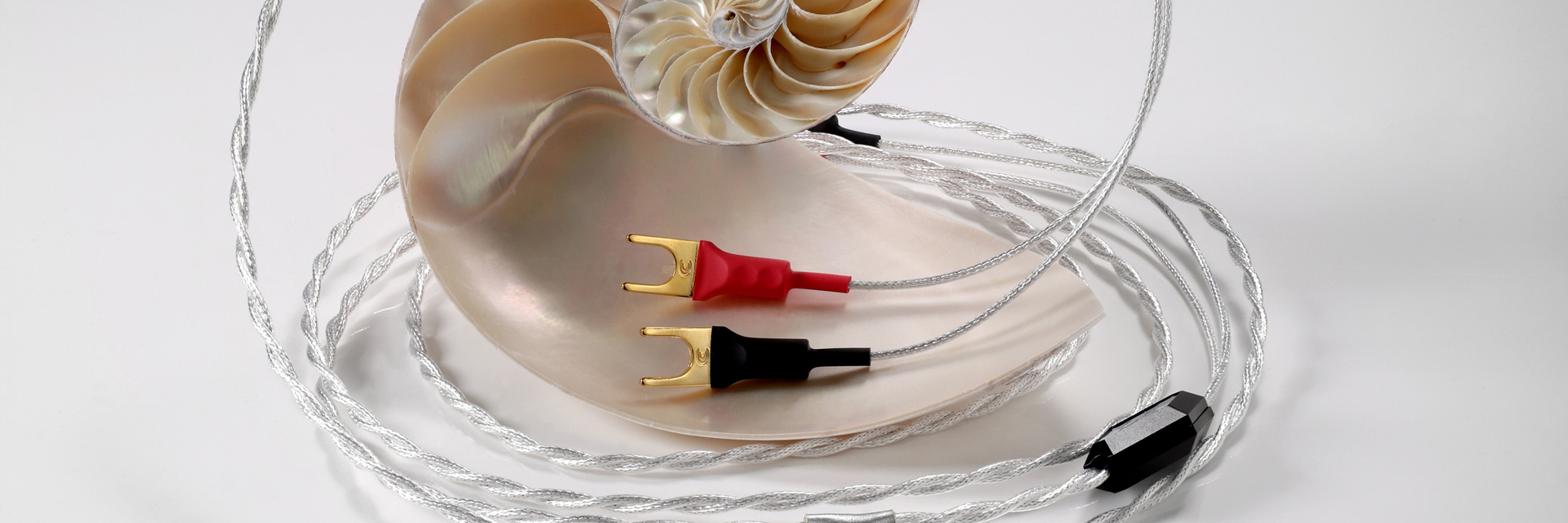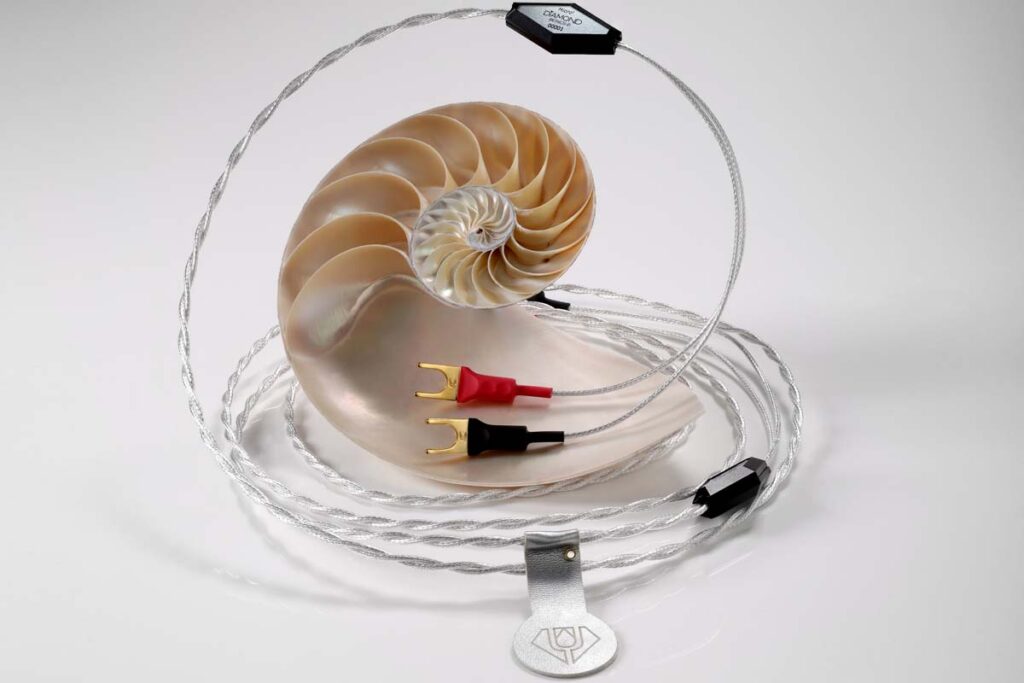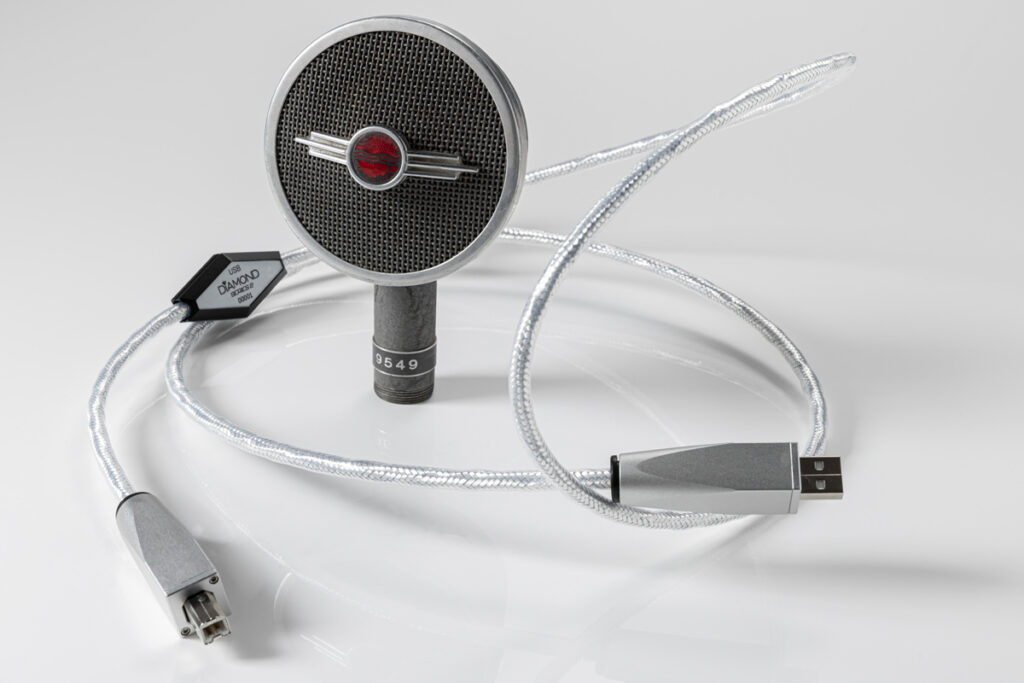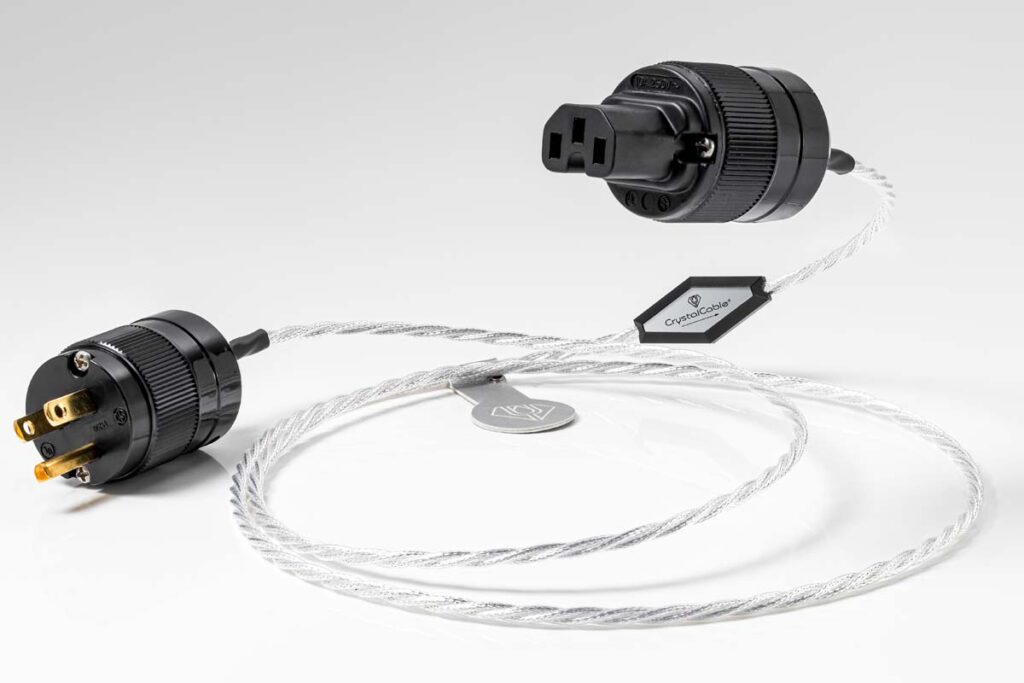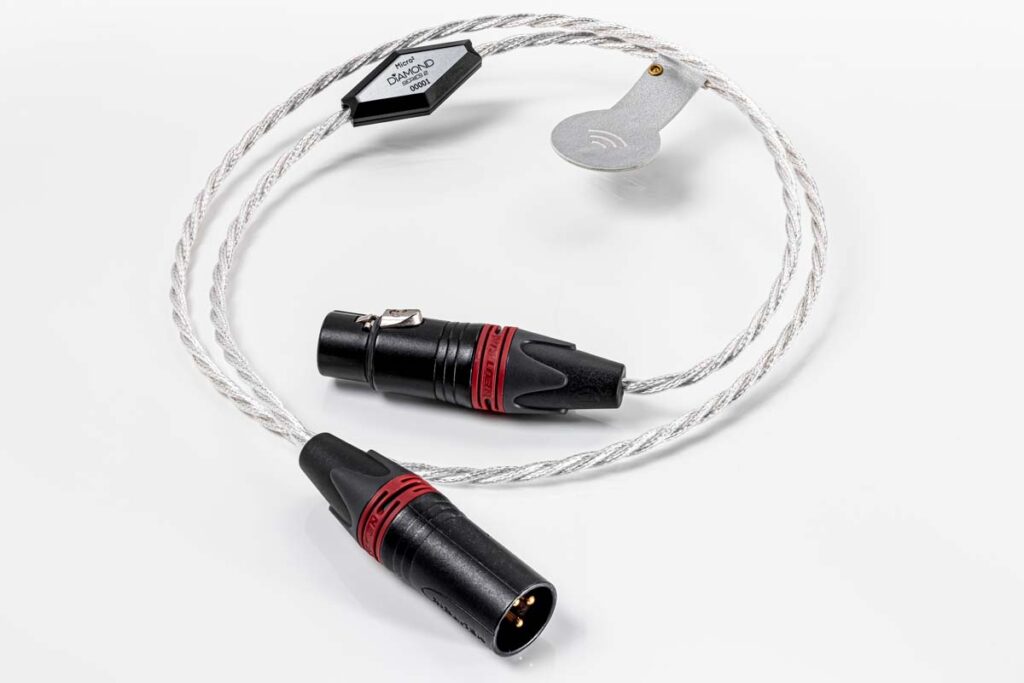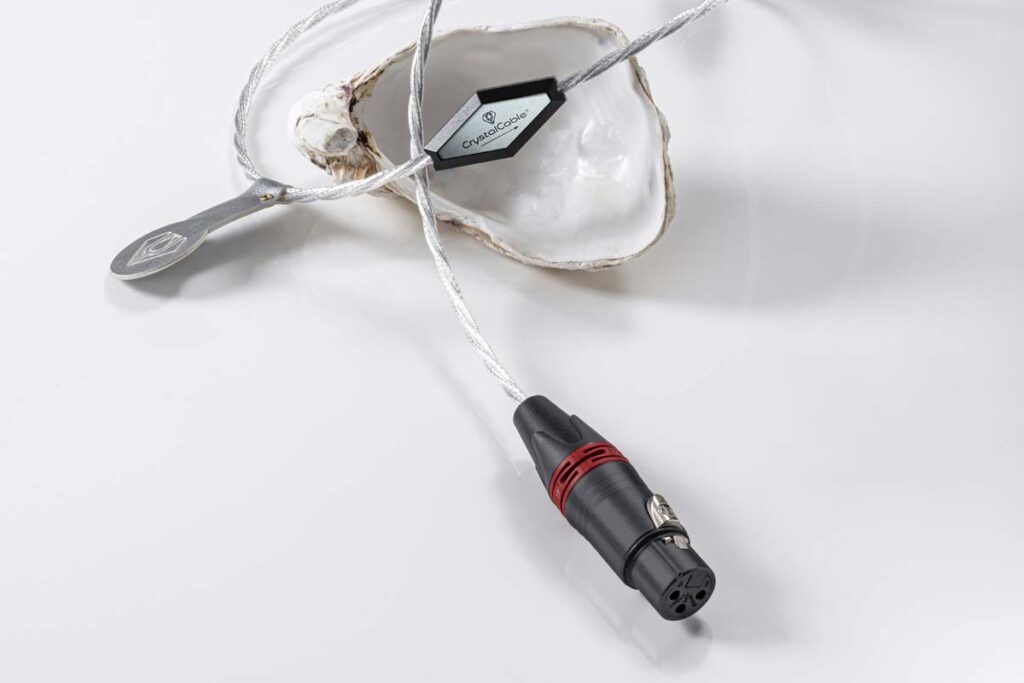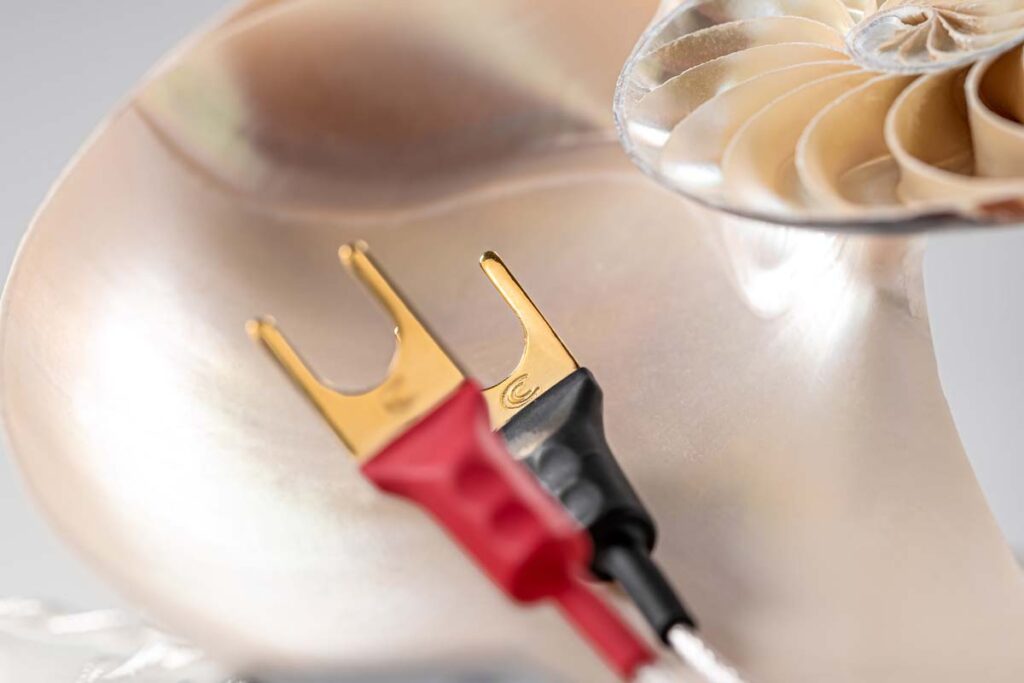You can fill tomes with all the discussions about cable sound. Pragmatic purists insist that cables aren’t supposed to sound at all and therefore do not (or should not) have any influence on the sound of a setup. High-end users who have been in the business for a few years and have heard a thing or two – and that means weird stuff at times – take a very different view. Anyone who is undecided as to which camp has the edge in this ongoing dispute should help themselves to the Diamond series from the cable experts at Crystal Cable with an open mind – amazement is all but guaranteed.
Something’s off. The editorial team had asked me to review the new Crystal Cable Diamond cable family. And now here I am, picking up a package from the parcel station that is remarkably small by high-end standards, tiny even, and which can take home without dislocating my spine. Cable family, really?
Yes, seriously. The delivery bill lists six different items from speaker cable pairs to network cables, all from the Diamond or Micro-Diamond line from the cable makers at Crystal Cable. Cables that are the antithesis of the popular device connector paradigm. The small cable gems are not forearm-thick anacondas that snake their way through the living room and must never be stepped on. Instead, they are shimmering silver “bell wires” with a neatly twisted structure that look smart and don’t put any strain whatsoever on the input sockets of my gear. The plugs are also not WBT derivatives, but in-house designs with very little metal on them, which makes wiring up my setup in my chronically cramped listening room a breeze.
It all starts with the speaker cable, for which the Crystal Cable and its distributor charge a self-confident 3300 euros for two lengths of three meters. A bit much for a few meters of bell wire. The mockery fades after the first few bars of music that my Clearaudio turntable sends to the terminals of my Infinity Kappa 7.2 Series II via the Simply Italy Unison tube amplifier. My setup has never sounded so airy, so balanced, so stable in the room and yet so transparent. The preconception that loudspeaker cables have to be big and fat in order to ensure good sound is permanently dispelled. Because the Crystal Cable Micro Diamond2 speaker cable does everything right, helping the overall tuning subtly adding something here while shaving something away elsewhere. A touch more bass, more clearly defined from the membranes of my old American speakers, with more shades, more gradations. More colors in the mid-range as well, which brings the voices of singers in particular closer to the familiar reality, to the impression you get of the person in question from a live concert. The icing on the cake is less harshness and shrillness in the treble.
Anyone looking at the company’s history will no longer be surprised at the homogeneous, natural tuning of these cables. Company boss Edwin Rynveld and his Hungarian-born wife Gabi are musicians. Only recently, Edwin, who is not only a retired clarinettist but also a composer, wrote a piano concerto for his wife, which she recorded with the Athens State Orchestra and of which there is also a recording. “Crystal Cable was launched in 2004 with the goal of achieving the best possible sound quality in a compact, elegant cable that is easy to connect to the system,” explains Edwin Rynveld, whose company International Audio Holding BV (IAH), based in Elst in the Netherlands, is now one of the world’s leading audio cable producers.
Rynveld adds that this was only possible because IAH has dedicated experts in metallurgy. “The Micro Diamond2 consists of 99.9997 percent pure silver,” says Werner Kempf, Head of Sales at IAH for the European DACH countries. According to Kempf, the conductors of the CC Diamond and Future Dream series also contain gold.
The extent to which spatiality improves with these cables is striking. To test this criterion, I collected a series of “test records” that have little or nothing to do with effect records. For example, David Zinman’s successful recording of Gustav Mahler’s Eighth Symphony with the Zurich Tonhalle Orchestra, recorded there with nine (!) soloists, a large choir and amplified strings and wind instruments. A behemoth work which, thanks to the “micro-diamonds”, comes from the SACD with an extraordinarily finely graded breadth and depth.
Rafael Kubelik’s version of Friedrich Smétaná’s Mein Vaterland, released in the Deutsche Grammophon series “The Original Source”, is almost more striking: a studio recording with a concert hall atmosphere. A tiny bit more boost can be added if the external phono amplifier is connected to the Unison via the Crystal Cable AF cable. The fine-tuning also helps the resolution, the level of detail increases once again. According to Edwin Rynveld, a conductor was specially developed for Crystal Cable that works with the lowest possible distortion, is unaffected by external influences and doesn’t lose its properties even under mechanical stress. “The materials are so stable that you can step on the cable without anything happening,” promises Rynveld.
How does Crystal Cable achieve this little miracle? The structure, which is not concealed by any coating and doesn’t have any bulky “radiation blockers”, i.e. protective masses, provides an indication that the aim of the developers was to create an emphatically low-capacitance cable, which can also be measured. The mix of materials used is designed to minimize the skin effects that cause unwanted distortion.
Microphonics should not be an issue for these cables because their structure means that they hardly offer any surface for disruptive influences such as vibrations or impact sound. “We use Dupont-Kapton and Teflon, among other materials, for the insulation,” reveals Edwin Rynveld. Others may have a much higher eye-catching potential with their creations – but from an acoustic point of view, the thin micro-diamonds easily outshine many supposedly more elaborate designs. This is the art of achieving the perfect all-round balance of this “Swiss Army knife” that has you look for weaknesses with a magnifying glass. Neutrality is not an empty word here, Rynveld and Kempf speak of warmth, fine detail and transparency, which were the focus of the sound development.
“The models in the Diamond2 and Future Dream Crystal Cable series are made of pure silver conductors,” explains Werner Kempf, reminding us that silver, like copper, is a polycrystalline metal. “Each of these metals has hundreds of microcracks per centimeter in its raw structure. These prevent optimum signal flow and create a certain resistance. At Crystal Cable and Siltech, we blast the pure silver conductors with gold particles to fill and smooth out the microcracks. This enables us to achieve even better conductivity,” explains Kempf.
Kempf also sees other advantages: “The conduction speed is slightly better with silver than with copper. The long-term disadvantage of copper is corrosion. Even a protected copper wire is exposed to oxygen and moisture. These circumstances cause the copper’s ability to transport the signal to deteriorate over time, which leads to a significant loss of sound quality over the years,” says Kempf.
The Micro Diamond2 “can do” almost anything. The club jazz of Cassandra Wilson as well as the unrivaled Purcell recital by British soprano Rowan Pierce, the crazy “symphonic meets rocked-out folk music” production by South Tyrolean Herbert Pixner with the Berlin Philharmonic Orchestra as well as the cheerful plastic pop of Taylor Swift epigone Chappell Roan. Much of the music gives the impression of hearing it for the first time, conveying the feeling that this music has never been served up so directly, so immediately and therefore so grippingly.
The fact that the impression with computer audio – network cables were also included in the Crystal Cable family package – is somewhat less significant in my setup is in the nature of things: In the world of bits and bytes, a great deal is a matter of configuration; the influence of device connections is less pronounced than with a predominantly analog stereo system.
This doesn’t change the basic recommendation: With the Micro-Diamond2 series from Crystal Cable, a good setup takes an audible step forward, the family sound is inherent in all members, the speaker cables have the most noticeable part in the improvement, the higher resolution becomes even clearer, even more tangible when using the LF cables (RCA or XLR). And the slim design is easy on device sockets and nerves. Priceless.
Accompanying Equipment
CD/SACD-Player: Pioneer PD06 | Turntables: Clearaudio Innovation Basic, Dr. Feickert Blackbird | Phono preamplifier: Musical Fidelity M1 VNYL | Preamplifiers: Trigon Snowwhite, Mark Levinson No. 380S | Tube integrated amplifier: Unison Research Simply Italy | Power amplifiers: Trigon Dwarf, Mark Levinson No. 27 | Loudspeakers: Infinity Kappa 7.2 Series II | Cables: AudioQuest, in-akustik
Cable family IAH Crystal Cable Diamond Series 2
Concept: Device connection and speaker cables with all common connector types; various lengths and assemblies, including LAN cables | Conductor: silver/gold2 | Jacket: Kapton, Teflon | Shielding: silver-coated copper | Price example: Speaker cable 2 x 3 m with gold-plated hollow bananas for € 3300
International Audio Holding
Edisonweg 8
6662 NW Elst
Netherlands
Represented in DACH by Werner Kempf
Phone +49 6028 4390/+49 1520 205 5552
werner@internationalaudioholding.com
www.internationalaudioholding.com

